Until 23rd May, The Gallery of Polish Institute in Düsseldorf holds an exhibition of works by prominent Polish avant-garde artists. The works by Henryk Berlewi, Karol Hiller, Marek Piasecki, Henryk Stażewski, Władysław Strzemiński, Alina Szapocznikow, Wacław Karol Szpakowski, Andrzej Wróblewski, Teresa Żarnowerówna and other artists have been gathered in one place. What is interesting is that they have all been gathered by the private collector Werner Jerke, who puts in great effort into promoting Polish art in Germany. While visiting the exhibition we had an opportunity to have a short conversation with its curator Ms Monika Kumięga. She explained us the underlying concept of the whole event and the goals which she and the owner of these precious works of art attempt to achieve.

Alina Szapocznikow, Monotype, courtesy Dr Werner Jerke and Polnisches Institut in Dusseldorf
Contemporary Lynx: Werner Jerke’s collection is rich in breadth and diversity. It includes works created in the 20s, all the way through to contemporary works of young Polish artists. However, the phenomenal collection of Mr Jerke does not constitute the focal point of your exhibition. Instead, there is a clear guiding principle, defined by the exhibition curators. Could you briefly describe this underlying idea of the exhibition?
Monika Kumięga: One year ago I curated the first exhibition of the works from a private Polish art collection. The title of that exhibition was “Teresa Murak. Do kogo idziesz” [Teresa Murak. Who are you going to]. Both a year ago and now, I strived to find within private collections works of art and the creators or the, so-called, “it factor”. This factor can also be called a fascination, that actually became an impulse or made these collectors collect Polish contemporary art works and follow this interest for the rest of their lives. In case of Dr Osman Djajadisastra, the focus was on the works and artistic personality of Teresa Murak. For Mr Jerke the “it factor” proved to be his own discovery of the Polish art of the interwar period and the followers of this artistic style.
CL: Why have you chosen this topic? Do you think that Polish avant-garde art is something special within the overall picture of the Polish art of the 20th century?
MK: Making decision to present Polish avant-garde in this particular period of time was not accidental at all. I was aware that Kunstsammlung Nordrhein-Westfalen prepared the exhibition entitled “Kandinsky, Malewitsch Mondrian – Der weiße Abgrund Unendlichkeit“ and that Bonn’s Budeskunsthalle worked on “Kasimir Malewitsch und die Russische Avantgarde”. Since we are presenting our exhibition alongside these two exhibitions, we became a part of the European avant-garde. Also, we have enriched the avant-garde concept with Polish themes, which are probably not familiar to art lovers and experts in North Rhine-Westphalia. Therefore, we have enabled them to discover these themes by showing to what extent Polish art of the time was related to the post- 1917 German, Dutch, Russian and French art.

Samuel Szczekacz, Construction, 4-11/III, 1936, courtesy Dr Werner Jerke
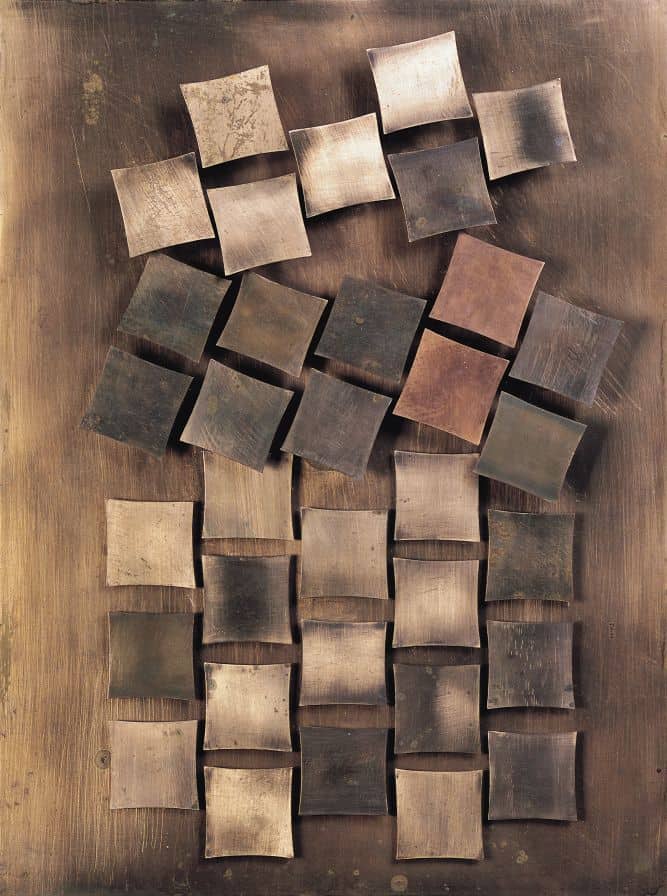
Henryk Stażewski
CL: What is the way to explain this phenomenon to the foreign audience, in this case the audience from Germany, who may not know much about Polish art in general. What should we start with? Should we focus exclusively on the names of artists who are already known? Is there an educational programme accompanying this exhibition (as well as other exhibitions organized in your gallery)?
MK: The exhibition is being presented during Quadriennale Düsseldorf festival, therefore there are some chances it will be noticed by a wider audience. While preparing this exhibition I concentrated on the topic of avant-garde and the popularity of this notion, since the concept of the avant-garde directly evokes certain associations. At the same time, it was really important for me to find a key, that would allow me to create a narration within the exhibition. This narration came into being thanks to two motives which I discovered in the works from Werner Jerke’s collection – the organic and geometric (constructivist) motives. I have selected specific works keeping these two motives in mind. The title of the exhibition: “Ideally balanced, organically abstract. The Polish avant-garde” [Idealnie zrównoważone, organicznie abstrakcyjne. Polska awangarda] was also chosen taking these motives into account. This title does not directly indicate any names of artists. Instead, it implies a creative dialogue between two currents: the organic and flowing (works by Maria Jarema, Alina Szapocznikow, Zdzisław Stanek) and the second one, which concentrates on geometric composition, devoid of non-artistic content (works by Samuel Szczekacz, Henryk Stażewski). However, one has to admit that many of those artists experimented with both currents.
CL: So this is not a concise presentation of the Polish avant-garde, even from the perspective of abstraction. From time to time you seem to wink to visitors, for example by presenting a chair made on the basis of Strzemiński’s project which dates back to about 1948. This is abstraction in a much broader sense of the word…
MK: Abstraction itself is neither a subject nor an object of our exhibition. The crucial thing is the composition, which can be based on geometric figures that cannot be found in natural environment, or on the lines and shapes which reflect what we observe in nature. The chair is a kind of reminder or, as you have nicely put it “a wink to our visitor”, which indicates that we, the visitors, as well as artists who are equipped with all kinds of theoretical knowledge, nevertheless refer every abstraction to the real world. We look for a shape and an association with the familiar reality in every abstraction. Artists sometimes suggest answers to us, e.g. Kazimierz Malewicz wants us to notice “A boy with a school bag” in two squares – black and red, or Władysław Strzemiński who called one of his abstractions “A lady behind a window”.

from the left: Władysław Strzemiński, Karol Hiller, exhibition view, photo Adam Grabolus, courtesy Dr Werner Jerke and Polnisches Institut in Dusseldorf
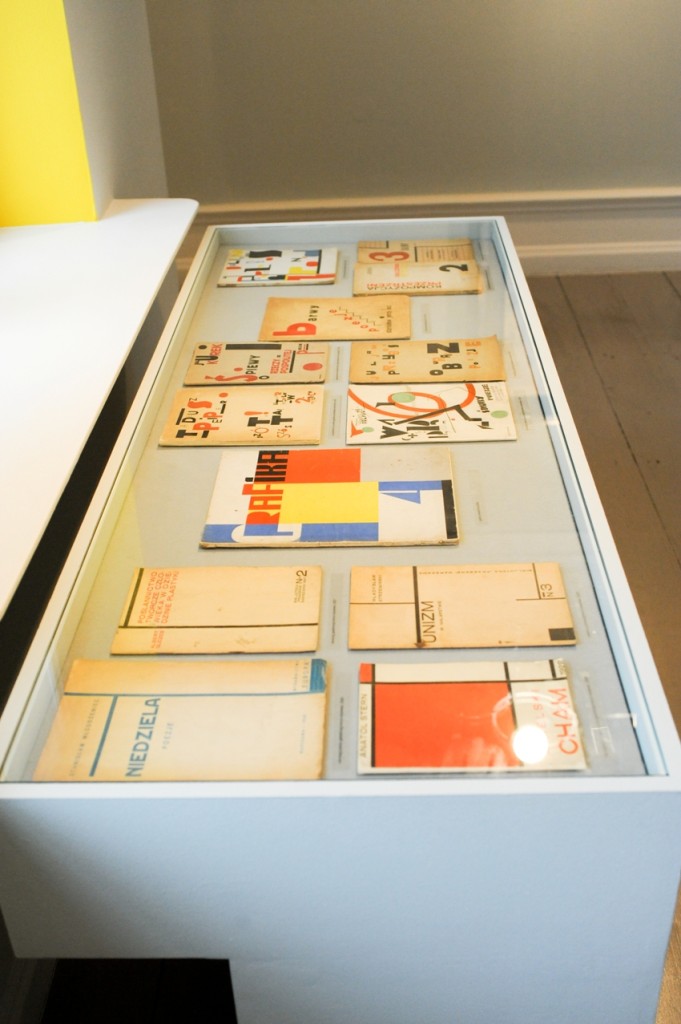
Wystawa IP DUS _PA_Foto Adam Grabolus_LLL_4170
CL: This exhibition does not consist only of works of art, in the basic sense of this word. There are books presented in the exhibition, where front covers and graphic layout was prepared by the best artists related to well-known contemporary groups, e.g. the famous a.r. group. Why have you decided to widen the scope of the exhibition so much? What is the role of these artifacts in Mr Jerke’s collection?
MK: These publications are already unique. However, it is important for the seasoned art observer to have a quick look at these books in order to immediately notice references and parallels to Bauhaus typography. This in turn presents to the audience an important aspect of creative lives of artists of those times, namely the fact that almost all of them were involved in architectural planning, book and press graphics, photomontage or poster design.
CL: Mr Jerke’s collection is one of the biggest collections of Polish art in Germany. Therefore, it is not surprising that you decided to show a part of it to the public. Could you tell me how your cooperation with Mr Jerke started and where the idea of this exhibition came from?
MK: The mission of Polish Institutes is to promote Poland in different parts of the world, which in our case is Germany. Presenting Polish art patrons from the Western countries, such as Werner Jerke and Osman Djajadisastra, as well as familiarising the audience with numerous interesting threads within the history of the Polish contemporary art in comparison with European art history, seem an opportunity which has to be seized. How did our cooperation start? We met somewhere accidentally; it was during an opening. We started talking and I realised how big of a potential Mr Jerke’s collection has. He was planning to open the first Museum of Polish Contemporary Art in Germany, in Recklinghausen. I was invited to see his collection. After that I knew instantly what we should present to the public. My next step was to gain Mr Jerke’s trust. My experience as a curator helped me to achieve this goal. As part of previous exhibitions in the Polish Institute we presented works by Magdalena Abakanowicz, Józef Szajna, Stanisław Fijałkowski, Jan Lenica, Franciszek Starowieyski, Dominik Lejman, Zbigniew Rogalski, Teresa Murak and many others.
I really hope that presenting the small but very significant part of Werner Jerke’s collection in our gallery will help him in his endeavours and will make his dream of opening the first private Museum of Polish Contemporary Art in Germany, in Recklinghausen come true.
CL: What did the preparations for this exhibition look like? I am mostly interested in your cooperation with the collector. Did Mr Jerke’s artistic tastes and exhibition vision influence the choice of the works to be presented in Düsseldorf and, if yes, to what extent?
MK: I would like to wish such a creative and inspiring cooperation to every curator. From the very beginning we knew that we wanted to present Polish avant-garde. For me personally, it was important to select the works which, on the one hand, depict the relationship between the Polish and the European avant-garde and, on the other hand, are exceptional, original and unique, for example heliographies by Karol Hiller and Marek Piasecki.
________________
Monika Kumięga (born in 1968) graduated in Cultural Studies at the University of Silesia with specialization in film studies. She has been working at Polish Institute in Düsseldorf since 1993, initially as an expert in the movie and then since 2003 she has been carrying out and coordinating a program of this Institute concerning contemporary art and visual arts (among others the exhibitions of: Tadeusz Rolke, Jerzy Lewczyński, Franciszek Starowieyski, Dominik Lejman, Zbigniew Rogalski, Jarosław Kozakiewicz, „Bruno Larka, którego nie było“, Małgorzata Jabłońska and Piotr Szewczyk, Andrzej Czeczot, „Masters of Polish children’s illustration“). As a curator she carried out among others the following exhibitions: „Düsseldorf im Dialog mit Solidarnosc – Fotografien von Erika Kiffl“ , „Teresa Murak. Zu wem gehst Du“ and “Ideally balanced, organically abstract. The Polish avant-garde”.
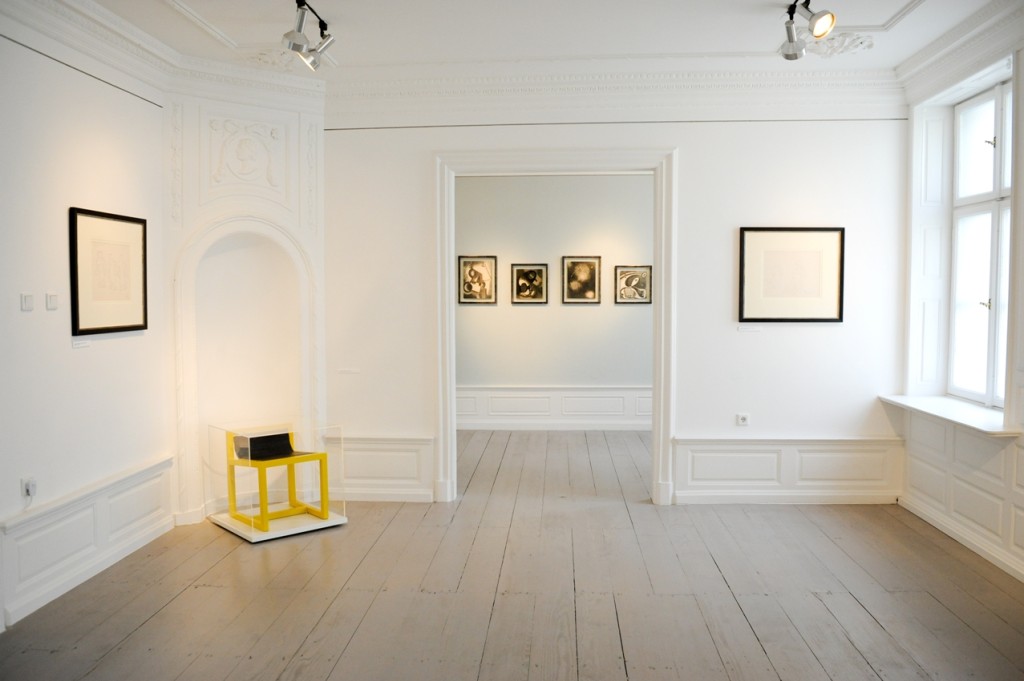
exhibition view, photo Adam Grabolus, courtesy Dr Werner Jerke and Polnisches Institut in Dusseldorf
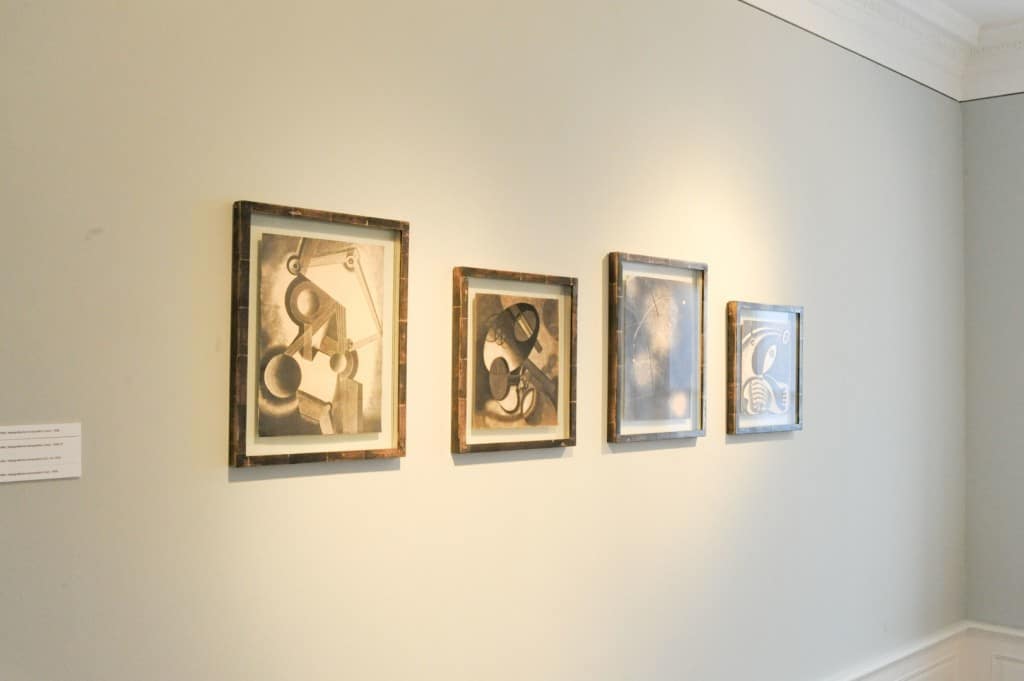
Karol Hiller, exhibition view, photo Adam Grabolus, courtesy Dr Werner Jerke and Polnishes Institut in Dusseldorf

Karol Hiller_Heliografische Komposition (XIV) 1939
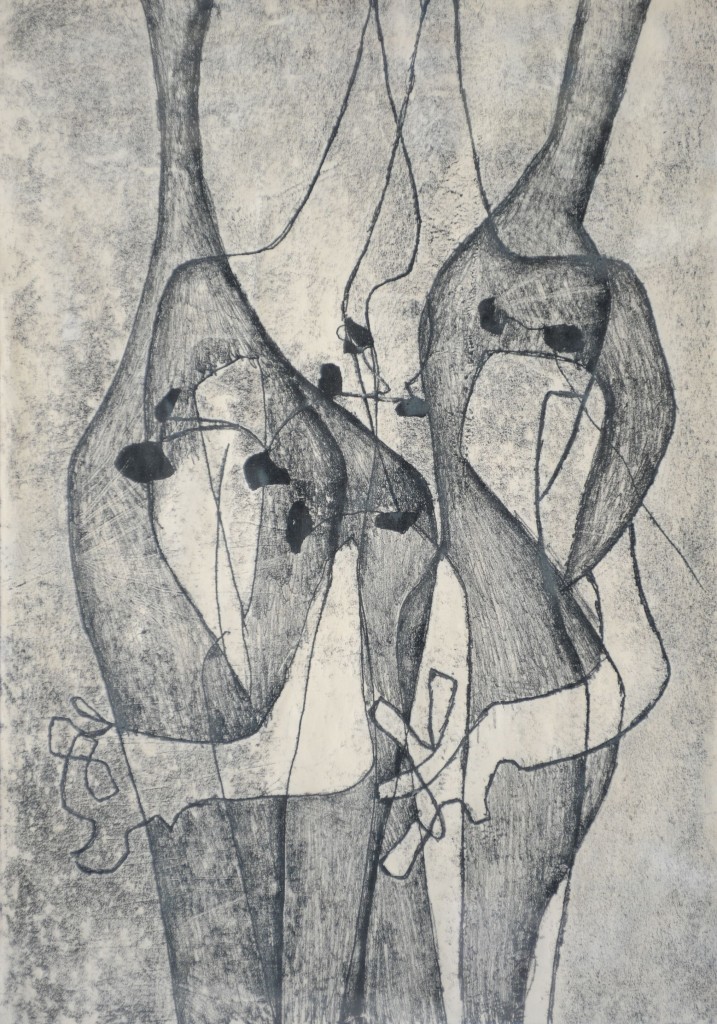
Maria Jarema_Gestalten_1952

Jarema Maria_ Foto Adam Grabolus_LLL_4153

from the left: Edward Krasiński, Samuel Szczekacz, Marek Piasecki, Henryk Stażewski’s Multiple and Relief, exhibition view, photo Adam Grabolus, courtesy Dr Werner Jerke and Polnisches Institut in Dusseldorf

Foto Adam Grabolus_Henryk Stażewski







